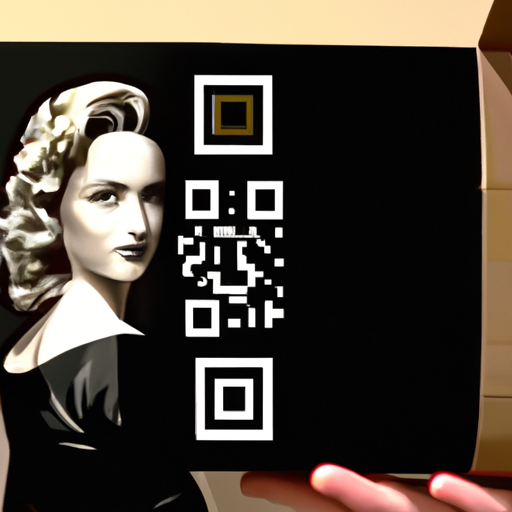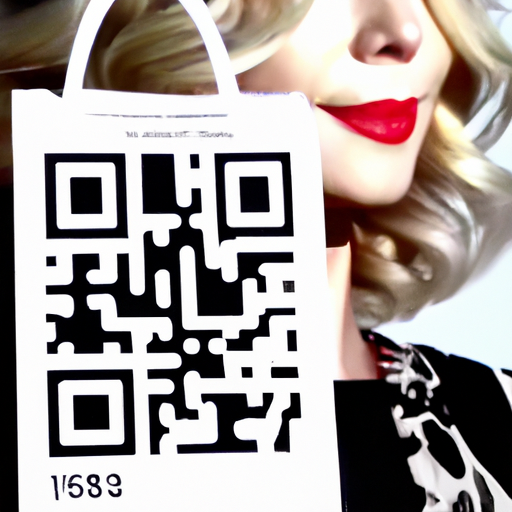
-
Table of Contents
- Innovative Packaging Technology: QR Codes, Augmented Reality, and More
- 1. QR Codes: Bridging the Gap Between Physical and Digital
- 2. Augmented Reality: Bringing Products to Life
- 3. Smart Packaging: The Internet of Things (IoT) in Packaging
- 4. Sustainability: Eco-Friendly Packaging Innovations
- Summary
Innovative Packaging Technology: QR Codes, Augmented Reality, and More

As technology continues to advance at a rapid pace, it is no surprise that it has also made its way into the world of packaging. Innovative packaging technology has revolutionized the way products are presented and marketed to consumers. From QR codes to augmented reality, these advancements have not only enhanced the consumer experience but also provided valuable insights to businesses. In this article, we will explore some of the most exciting packaging technologies and their impact on the industry.
1. QR Codes: Bridging the Gap Between Physical and Digital
QR codes, short for Quick Response codes, have become increasingly popular in recent years. These two-dimensional barcodes can be scanned using a smartphone or a QR code reader, instantly directing users to a specific webpage or digital content. In the context of packaging, QR codes offer a unique opportunity to bridge the gap between physical products and digital experiences.
One of the key advantages of QR codes is their versatility. They can be printed on various packaging materials, including paper, plastic, and even glass. This means that virtually any product can incorporate a QR code, regardless of its size or shape. For example, a food product can have a QR code on its packaging that leads consumers to a recipe website, providing them with cooking ideas and inspiration.
Furthermore, QR codes can be used to provide additional product information, such as nutritional facts, ingredient lists, and manufacturing details. This not only helps consumers make informed purchasing decisions but also promotes transparency and trust between brands and their customers.
Case Study: Coca-Cola’s “Share a Coke” Campaign
A notable example of QR code usage in packaging is Coca-Cola’s “Share a Coke” campaign. In this campaign, Coca-Cola printed QR codes on their bottles, allowing consumers to scan the code and personalize a virtual bottle with their name. This interactive experience not only increased consumer engagement but also generated valuable data for Coca-Cola, as they were able to track the popularity of different names and tailor their marketing efforts accordingly.
2. Augmented Reality: Bringing Products to Life
Augmented reality (AR) is another innovative packaging technology that has gained significant traction in recent years. AR overlays digital content onto the real world, creating an interactive and immersive experience for users. When applied to packaging, AR can bring products to life and provide consumers with a unique and engaging experience.
One of the main advantages of AR is its ability to showcase products in a virtual environment. For example, a furniture company can use AR to allow customers to visualize how a particular piece of furniture would look in their own home. By simply scanning the packaging with a smartphone or a tablet, consumers can see a 3D model of the product in their desired space, helping them make more informed purchasing decisions.
AR can also be used to provide additional information and instructions. For instance, a skincare product can use AR to demonstrate the proper application technique, ensuring that consumers get the most out of the product. This not only enhances the user experience but also reduces the likelihood of misuse or dissatisfaction.
Case Study: IKEA’s AR Catalog
IKEA, the Swedish furniture retailer, has embraced AR technology to enhance its catalog experience. By scanning the catalog pages with the IKEA app, customers can see 3D models of furniture and place them in their own homes. This allows customers to visualize how different pieces of furniture would fit in their space, making the purchasing process more convenient and informed.
3. Smart Packaging: The Internet of Things (IoT) in Packaging
The Internet of Things (IoT) has revolutionized various industries, and packaging is no exception. Smart packaging refers to the integration of IoT technology into product packaging, enabling communication between the product, the packaging, and the consumer.
One of the key benefits of smart packaging is its ability to provide real-time information about the product. For example, a pharmaceutical company can use smart packaging to monitor the temperature and humidity of a medication, ensuring that it is stored under optimal conditions. This not only helps maintain product quality but also enhances consumer safety.
Smart packaging can also be used to track and authenticate products throughout the supply chain. By incorporating sensors and RFID tags into the packaging, businesses can monitor the location and condition of their products in real-time. This not only helps prevent counterfeiting but also improves inventory management and reduces waste.
Case Study: Diageo’s Smart Bottles
Diageo, a global alcoholic beverages company, has introduced smart bottles that use NFC (Near Field Communication) technology to provide consumers with personalized experiences. By tapping their smartphones on the bottle, consumers can access exclusive content, such as cocktail recipes and promotional offers. This not only enhances consumer engagement but also provides valuable data to Diageo, allowing them to tailor their marketing efforts and gain insights into consumer preferences.
4. Sustainability: Eco-Friendly Packaging Innovations
While technology has undoubtedly transformed packaging, it is essential to consider its environmental impact. As consumers become more conscious of sustainability, there is a growing demand for eco-friendly packaging solutions.
Fortunately, innovative packaging technologies have also contributed to sustainability efforts. For example, companies are exploring the use of biodegradable materials, such as plant-based plastics and compostable packaging. These materials break down naturally, reducing the environmental footprint of packaging waste.
Additionally, smart packaging can help reduce food waste. By incorporating sensors into packaging, businesses can monitor the freshness of perishable goods and provide consumers with real-time information about their quality. This helps consumers make informed decisions and reduces the likelihood of food being thrown away unnecessarily.
Case Study: Loop’s Reusable Packaging
Loop, a global shopping platform, has introduced reusable packaging as an alternative to single-use packaging. Customers can order products online and have them delivered in durable, reusable containers. Once the products are consumed, the empty containers are collected, cleaned, and refilled, creating a circular packaging system. This not only reduces packaging waste but also promotes a more sustainable approach to consumption.
Summary
Innovative packaging technology has transformed the way products are presented and experienced by consumers. QR codes have bridged the gap between physical and digital, providing additional information and personalized experiences. Augmented reality has brought products to life, allowing consumers to visualize and interact with them in a virtual environment. Smart packaging has leveraged IoT technology to provide real-time information and track products throughout the supply chain. Lastly, sustainability has been a key focus, with eco-friendly packaging innovations reducing waste and promoting a circular economy.
As technology continues to evolve, it is exciting to imagine what the future holds for packaging. From holographic displays to biodegradable materials, the possibilities are endless. One thing is certain: innovative packaging technology will continue to shape the industry, providing consumers with enhanced experiences and businesses with valuable insights.
